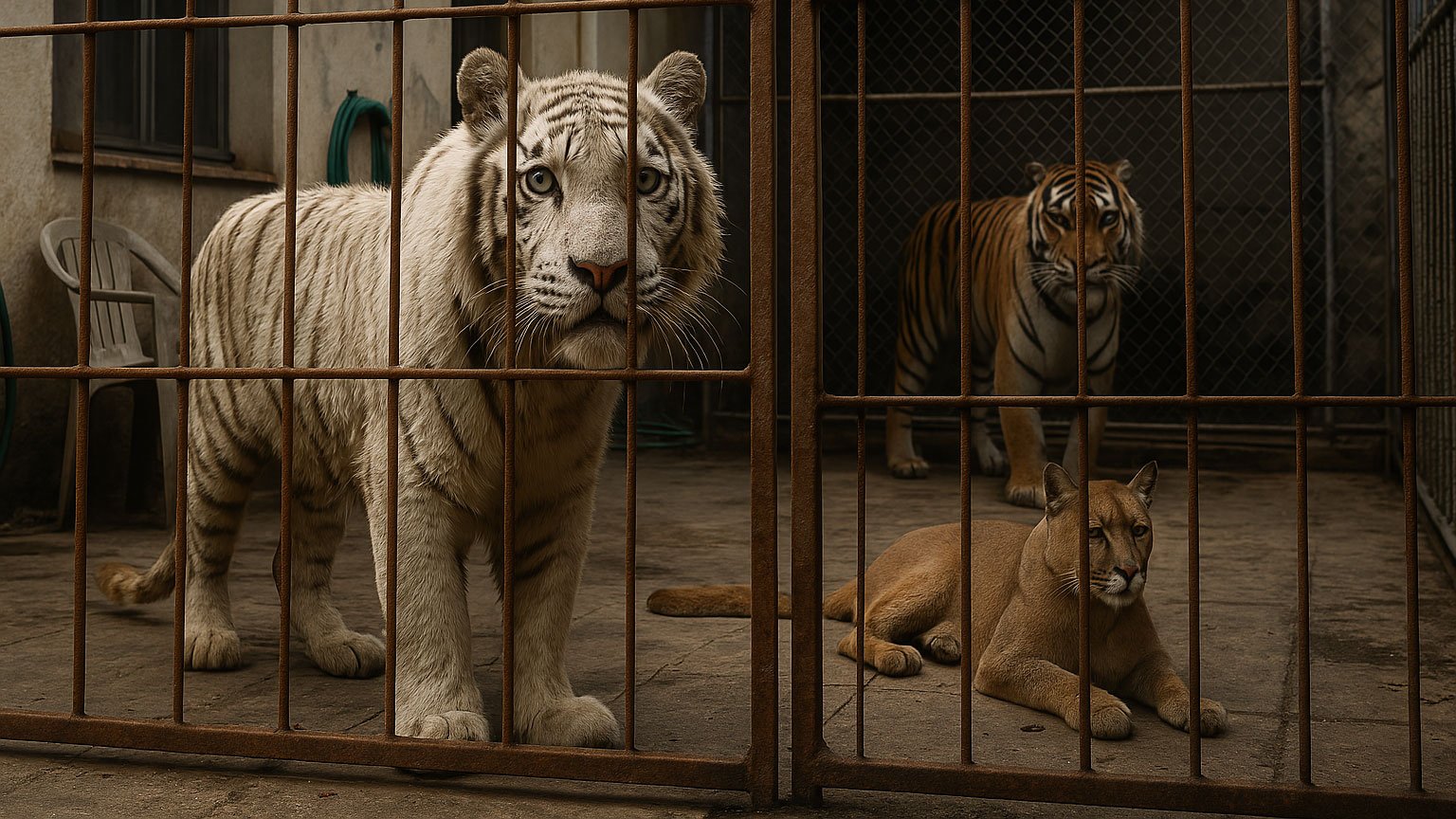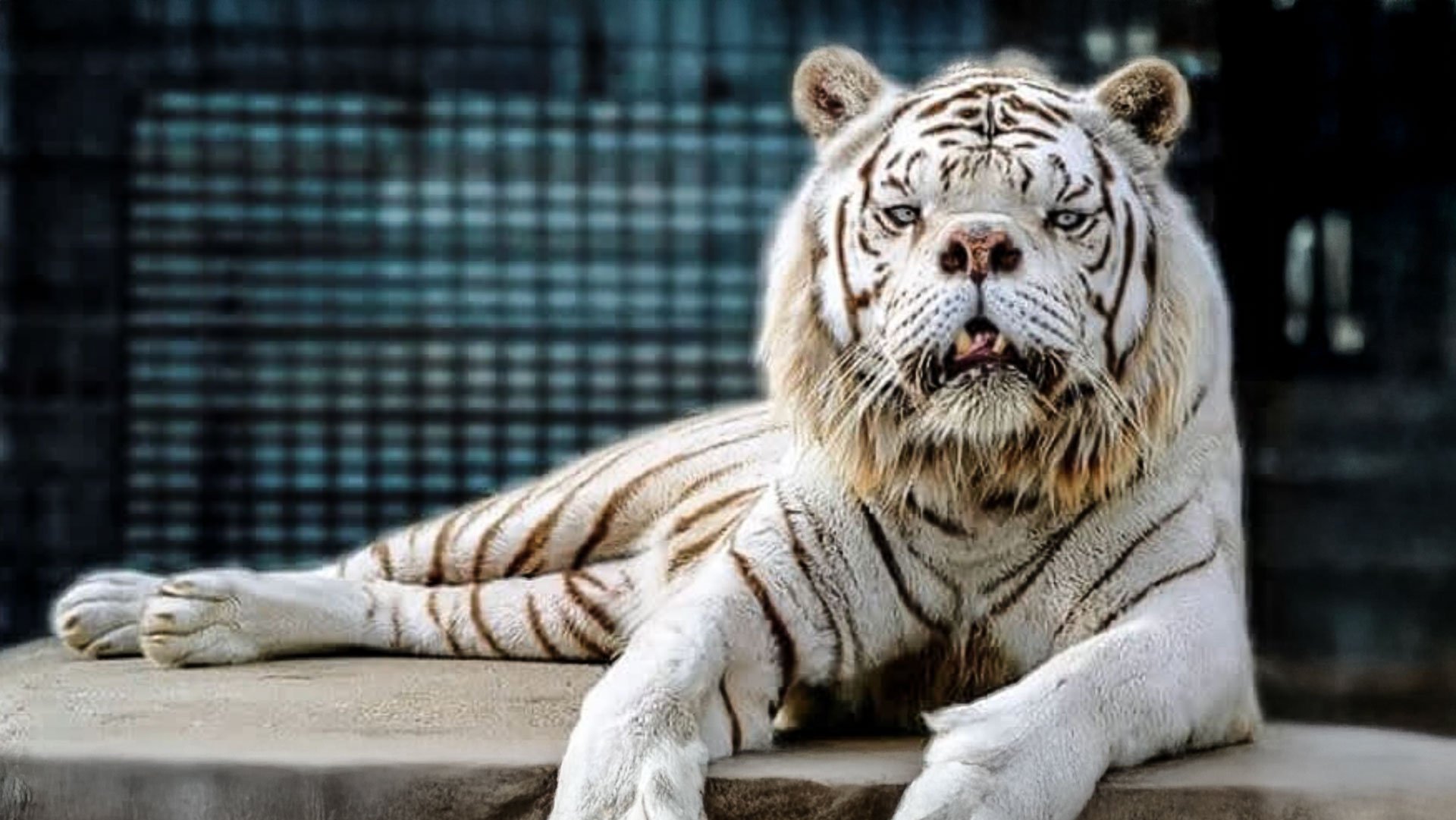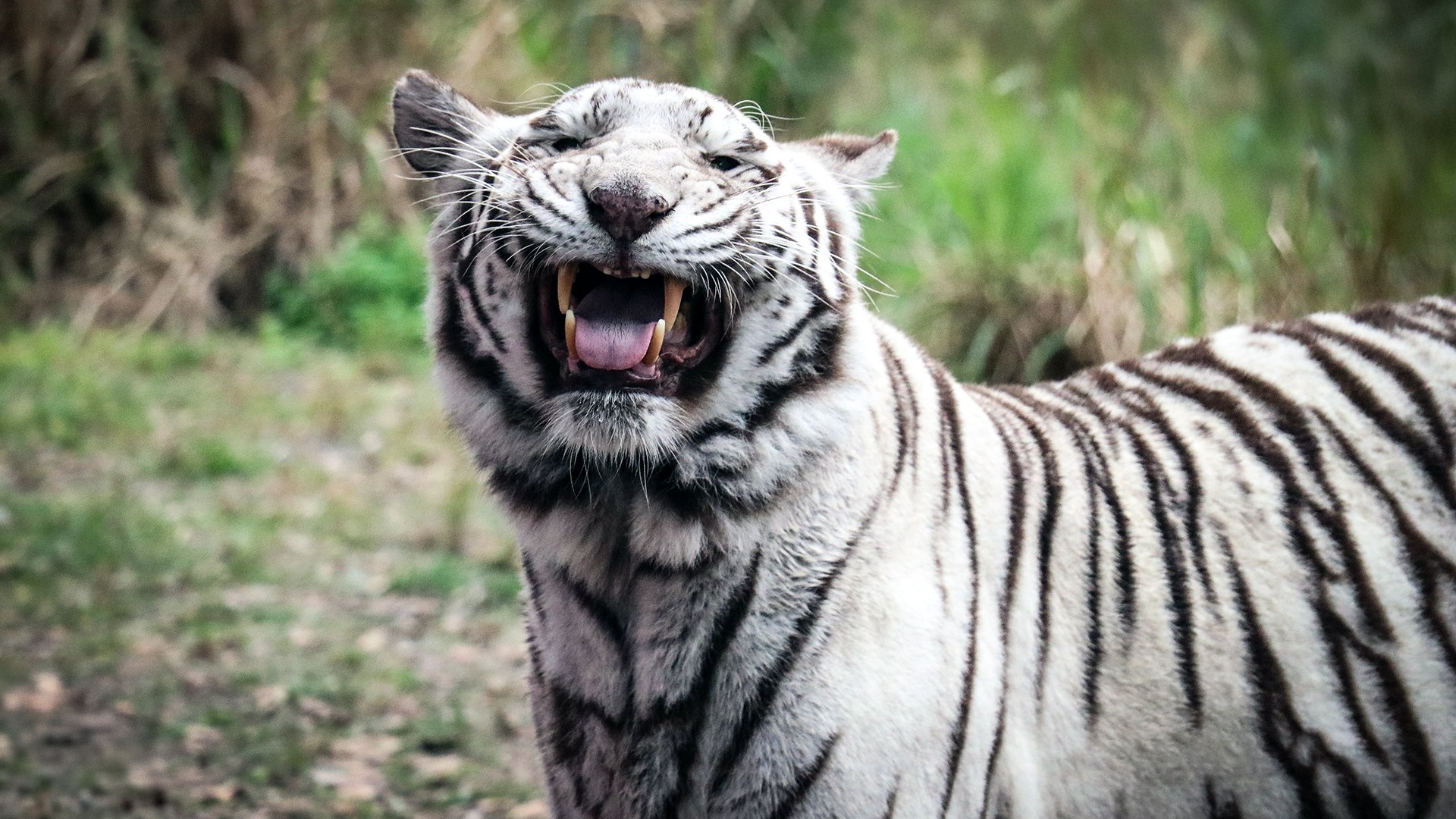White Tigers, Dark Truths: Why We Must Stop Breeding Ghosts of the Wild
In the pale gleam of their snowy coats and icy blue eyes, white tigers seem like mythical beings—majestic creatures that capture the human imagination. Tourists flock to zoos from Delhi to Mysuru, hoping for a glimpse of what’s often marketed as a rare and endangered species. But what if the very thing we are admiring is built on a lie—one rooted in cruelty, inbreeding, and a total betrayal of nature?
Let’s unravel the truth behind these “majestic creatures,” and why continuing to promote white tigers in zoos sends the wrong message to our children and the world.
The Truth About White Tigers
White tigers are not a separate species. They are not even naturally occurring in the wild anymore. These tigers are the result of a rare genetic mutation called leucism—an inherited trait that can cause paler coloration. The few white tigers born in the wild, like the original Mohan captured in India in the 1950s, were anomalies.
But in captivity, that anomaly was commercialized.
To produce more white tigers, breeders have repeatedly inbred close relatives: fathers with daughters, brothers with sisters. The result? Kittens born with cleft palates, crossed eyes, spinal deformities, club feet, and other painful birth defects. Many cubs are quietly euthanized or die shortly after birth. Those who survive are often riddled with health issues for life.
The price of “beauty” is paid in suffering.
A Misguided Form of Conservation
In the Times of India’s feature, zoos proudly display white tigers as symbols of their conservation commitment. Yet white tiger breeding programs have nothing to do with preserving biodiversity or saving Bengal tigers in the wild. These animals are not reintroduced into forests. They are not genetically representative of the broader tiger population. And worst of all, they siphon funding and attention away from real conservation work that could help protect wild habitats and wild-born tigers.
No serious conservationist would recommend breeding animals for a single recessive trait at the cost of genetic health and species survival.
The Danger of Teaching the Wrong Lesson
When children see white tigers in cages, what are they really learning?
Are they learning about nature—or a distortion of it? Are they being taught that it's acceptable to manipulate life for aesthetics, or that animals are here for our entertainment?
Zoos often promote themselves as centers for education. But education divorced from ethics is hollow. Children today are digital natives—more than capable of learning through immersive virtual reality, interactive apps, live-streamed safaris, and storytelling experiences that honor the wild, not exploit it.
Imagine letting a child “follow” a real tiger in the Sundarbans via camera traps and GPS, rather than staring at a genetically deformed cat pacing endlessly in a concrete cell. One inspires wonder and responsibility. The other, apathy and entitlement.
Hope in the Age of Tech and Truth
The world is changing. The Big Cat Public Safety Act, passed in the U.S. in 2022, banned public contact with big cats and ended the private ownership that fueled much of the demand for cub petting and breeding white tigers for profit. Now, Big Cat Rescue is focusing not on captivity, but on preserving wild cats in the wild.
We’re entering an era where compassion and conservation must go hand-in-hand. Where storytelling replaces showmanship. Where ethical wildlife experiences, rooted in respect and science, guide our choices.
What You Can Do
Say no to zoos that breed white tigers or other genetically manipulated animals.
Support virtual education programs and wildlife reserves that protect animals in their natural habitats.
Speak up on social media when you see misleading promotions that mask animal suffering with pretty pictures.
Donate to organizations like Big Cat Rescue that are leading the charge to end exploitation and empower real conservation.
Let’s teach our children that true majesty doesn’t come from cages—it comes from freedom, respect, and the wild beating heart of nature itself.
Please comment on this page to let Times of India know they are wrong to promote white tiger breeding. https://timesofindia.indiatimes.com/life-style/travel/destinations/white-tigers-in-india-top-6-zoos-to-see-the-majestic-creature/photostory/121995705.cms




